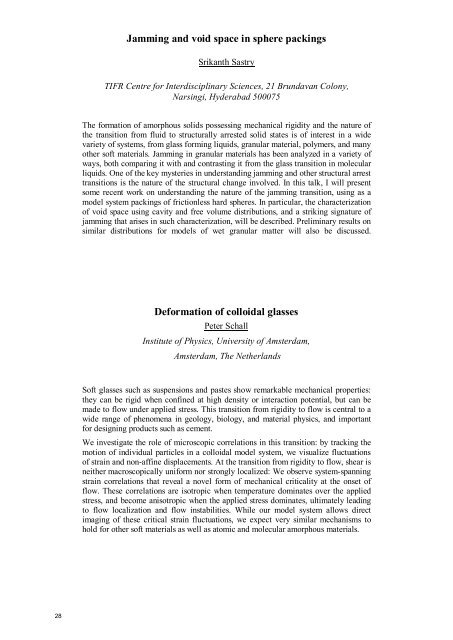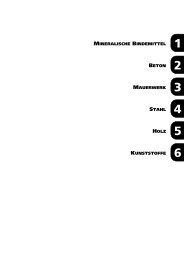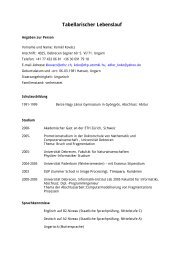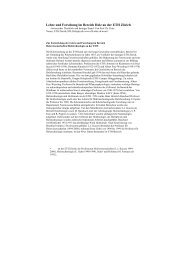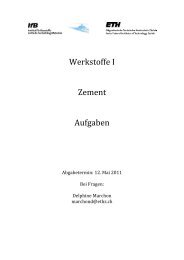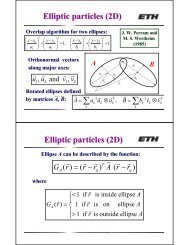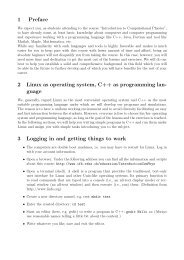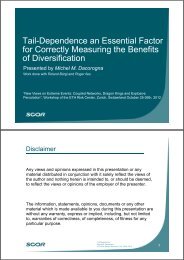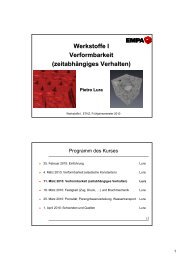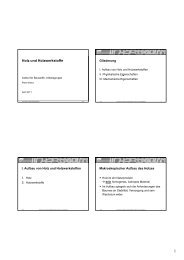Here - Institute for Building Materials - ETH Zürich
Here - Institute for Building Materials - ETH Zürich
Here - Institute for Building Materials - ETH Zürich
You also want an ePaper? Increase the reach of your titles
YUMPU automatically turns print PDFs into web optimized ePapers that Google loves.
Jamming and void space in sphere packingsSrikanth SastryTIFR Centre <strong>for</strong> Interdisciplinary Sciences, 21 Brundavan Colony,Narsingi, Hyderabad 500075The <strong>for</strong>mation of amorphous solids possessing mechanical rigidity and the nature ofthe transition from fluid to structurally arrested solid states is of interest in a widevariety of systems, from glass <strong>for</strong>ming liquids, granular material, polymers, and manyother soft materials. Jamming in granular materials has been analyzed in a variety ofways, both comparing it with and contrasting it from the glass transition in molecularliquids. One of the key mysteries in understanding jamming and other structural arresttransitions is the nature of the structural change involved. In this talk, I will presentsome recent work on understanding the nature of the jamming transition, using as amodel system packings of frictionless hard spheres. In particular, the characterizationof void space using cavity and free volume distributions, and a striking signature ofjamming that arises in such characterization, will be described. Preliminary results onsimilar distributions <strong>for</strong> models of wet granular matter will also be discussed.De<strong>for</strong>mation of colloidal glassesPeter Schall<strong>Institute</strong> of Physics, University of Amsterdam,Amsterdam, The NetherlandsSoft glasses such as suspensions and pastes show remarkable mechanical properties:they can be rigid when confined at high density or interaction potential, but can bemade to flow under applied stress. This transition from rigidity to flow is central to awide range of phenomena in geology, biology, and material physics, and important<strong>for</strong> designing products such as cement.We investigate the role of microscopic correlations in this transition: by tracking themotion of individual particles in a colloidal model system, we visualize fluctuationsof strain and non-affine displacements. At the transition from rigidity to flow, shear isneither macroscopically uni<strong>for</strong>m nor strongly localized: We observe system-spanningstrain correlations that reveal a novel <strong>for</strong>m of mechanical criticality at the onset offlow. These correlations are isotropic when temperature dominates over the appliedstress, and become anisotropic when the applied stress dominates, ultimately leadingto flow localization and flow instabilities. While our model system allows directimaging of these critical strain fluctuations, we expect very similar mechanisms tohold <strong>for</strong> other soft materials as well as atomic and molecular amorphous materials.28


